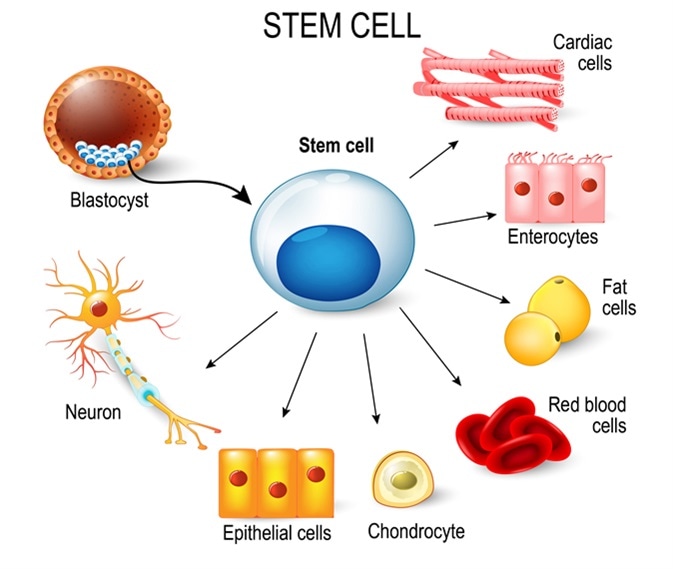Table of Contents
The authors keep in mind difficulties that stay, consisting of enhancing the engraftment success and cell survival. Due to the fact that the ISCI and Miller College are leaders in this field, the authors additionally emphasize the requirement to standardize meanings and outcomes procedures in the field. "The Hare Laboratory continues to be at the center of pioneering brand-new therapies in this critical clinical domain name.
Now we are exploring how to harness such stem cells to aid clients recover their very own broken hearts."The study is directed by the Cedars-Sinai Heart Institute, with the partnership of the Johns Hopkins University, where Dr. Marbn functioned prior to joining Cedars-Sinai in 2007. The 24 people taking part in the research have hearts that were damaged and scarred by cardiac arrest.

It takes around 4 weeks for the cells to increase to numbers adequate for restorative usage, about 10 to 25 million. In the third and final action, the now-multiplied stem cells are reintroduced into the person's coronary arteries throughout a second catheter procedure. All patients in the study needed to have seasoned heart strikes within four weeks before enrolling in the research study task.
Later this summertime, it is prepared for that 12 more people will undertake treatments to obtain 25 million stem cells, while 6 extra individuals will be kept track of as controls. The initial person, Kenneth Milles, a 39-year-old controller for a small building and construction firm in the San Fernando Valley, experienced a cardiac arrest on May 10 because of a 99 percent clog in the left former coming down artery, a major artery of the heart.
The process to expand the cardiac-derived stem cells entailed in the research was developed by Marbn when he got on the professors of Johns Hopkins University. The college has filed for a license on that copyright, and has actually licensed it to a business in which Dr. Marbn has a financial passion.

All financing was originated from the National Institutes of Wellness, the Donald W. Reynolds Foundation and Cedars-Sinai Medical Center. Marbn holds The Mark Siegel Family Foundation Endowed Chair and Director of the Heart Institute.
What to know about how stem cells help with Arrhythmias
Cardiac arrest is an acute or persistent condition that influences millions of individuals worldwide. The most frequently accepted methods of therapy usually consist of symptom monitoring and medicine taken for life, so the burden caused by the problem is hefty. Stem cell treatment for cardiac arrest has become a brand-new means to deal with and manage the core of the condition.
Nonetheless, stem cell therapy can assist to relieve signs and symptoms and boost the heart's pumping capacity. This therapy utilizes the ability of stem cells to self-regenerate and self-heal. Adhering to the admission of stem cell injections for coronary infarction, several mechanisms come into play: Stem cells for cardiac arrest promote the formation of specialized cardiac muscle cells and restore damaged tissue, improving the heart's pumping ability.
These are types of grown-up stem cells that are acquired from bone marrow, fat tissue, and skin cells. These are the most common and well-researched kinds of stem cells.
These are gotten from embryos and have the pluripotent possibility to change into any kind of sort of cells, consisting of cardiac ones. The major issue with these cells is that, as they are drawn from embryos, they have many honest and legal restrictions and are only used in particular situations. for the factors stated over.
Leading providers of stem cell therapy for Peripheral Artery Disease
These cells stem in the heart and are fit to heart repair. Medical Advisor, Swiss Medica medical professional The application and treatment of stem cell treatment consists of five steps: Patients begin with an on the internet assessment with our clinical advisor and are after that assessed by a cardiologist, that will get the needed clinical background, perform blood tests, and demand imaging researches to figure out whether stem cell therapy for heart failure is a feasible option.
We administer stem cells via painless stem cell injections for heart disease. An extremely educated doctor will inject processed stem cells right into the blood stream; the whole procedure takes much less than an hour. After finishing the heart disease stem cell therapy procedures, our individuals will certainly be monitored for any complications and outcomes.
Navigation
Latest Posts
Where to get stem cell therapy targeting Heart Disease
Is stem cell therapy right for Heart Failure with regenerative medicine?
Can stem cells help with Arrhythmias explained